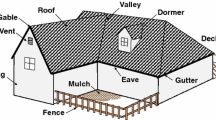Abstract
In the UK, prescriptive fire safety guidance offers a simple means of meeting statutory building regulation requirements, for most common building situations. In the context of prescriptive structural fire resistance, buildings are afforded a fire resistance period based upon their height and use. This fire resistance expectation is either to be achieved inherently by structural elements or via protection to them. The broad aim of such prescriptive guidance is the delivery of a consistent level of risk across all building types. For this to be achieved, as the frequency of fires and consequence of failure increases, the reliability of the fire resistance system must increase. This typically manifests in an increase in a building’s fire resistance expectation as height increases. Despite this common practice, this paper fundamentally reviews the concept of fire resistance as a height dependant metric for residential buildings, identifying the limitations of such an approach, utilising single stair apartment buildings as a basis for demonstration and further investigations. A risk correlation is proposed that seeks to explicitly define the structural fire resistance design goal (reliability of the fire resistance system) as a function of both height and occupancy. The correlation is calibrated against UK statistical data to determine what might constitute a common building. It is found that in single stair buildings, an appropriate benchmark case would constitute 7 apartments per level, ranging in size from 1 to 3 bedrooms (28 m2 to 101 m2). This benchmark case is used to determine a risk score which, for the purpose of achieving a consistent level of risk, becomes a constant in the proposed risk correlation. Four example building cases are chosen to demonstrate the application of the correlation. The cases are of the same notional height, but constitute differing occupancy (apartment) numbers. The proposed correlation indicates that the four cases, despite being of the same height, have significantly different fire resistance system reliability demands (96.3% to 98.5%) and, thus, fire resistance demands (154 min to 173 min). In light of the findings, it is concluded that, if conventional structural fire resistance thresholds are not to be exceeded (in the UK typically limited to 120 min), then, in tall residential buildings, the reliability/efficacy of the sprinkler system becomes increasingly important. Finally, a brief discussion is provided regarding the limitations of the approaches presented.









Similar content being viewed by others
References
Communities and Local Government (2007) Approved Document B (fire safety)—buildings other than dwellinghouses. The Building Regulations 2010. CLG, London
British Standards Institution (2008) Code of practice for fire safety in the design, management and use of buildings. BS 9999. BSI, London
Kirby BR et al. (2004) A new approach to specifying fire resistance periods. Struct Eng 84(19):34–37
British Standards Institution (2003) Application of fire safety engineering principles to the design of buildings. Probabilistic risk assessment. PD 7974-7. BSI, London
Ministry of Works (1952) Fire grading of buildings. Post-war building studies No 20: Part I: general principles and structural precautions, Her Majesty’s Stationery Office, London
Ramachandran G, Charters D (2011) Quantitative risk assessment in fire safety, 1st ed, Spon Press, London
London Fire Brigade (2015) Fire facts—fires in greater London. LFB, London
Department for Communities and Local Government, (2015) Statistical data set Live tables on house building. https://www.gov.uk/government/statistical-data-sets/live-tables-on-house-building. Accessed 17 Aug 2015.
Wilson S (2010) Dwelling size survey. Housing standards: evidence and research, CABE
Roberts-Hughes R (2011) The case for space—the size of England’s new homes. RIBA, London
Littlefield D (2012) Metric handbook, Routledge, London
HATC (2006) Housing space standards. Greater London Authority, London
Department for Communities and Local Government 2015. Technical housing standards—nationally described space standard. DCLG, London
British Standards Institution (2002) Eurocode 1: actions on structures—Part 1-2: general actions—actions on structures exposed to fire. BS EN 1991-1-2. BSI, London
British Standards Institution (2007) Background paper to the UK National Annex to BS EN 1991-1-2. PD 6688-1-2:2007,Published Document, BSI
International Organization for Standardization (1999) Fire-resistance tests—elements of building construction—Part 1: general requirements. ISO 834-1:1999. ISO, Geneva
British Standards Institution (2004) Fixed firefighting systems—automatic sprinkler systems—design, installation and maintenance. BS EN 12845:2004. BSI, London
Law A, Butterworth N, Stern-Gottfried J (2015) A risk based framework for time equivalence and fire resistance. Fire Technol 50(4):771–784. doi:10.1007/s10694-014-0410-9.
Hall JR (2010) U.S. experience with sprinklers and other fire extinguishing equipment. Fire Analysis and Research Division, National Fire Protection Association (NFPA), Quincy
Author information
Authors and Affiliations
Corresponding author
Rights and permissions
About this article
Cite this article
Hopkin, D. A Review of Fire Resistance Expectations for High-Rise UK Apartment Buildings. Fire Technol 53, 87–106 (2017). https://doi.org/10.1007/s10694-016-0571-9
Received:
Accepted:
Published:
Issue Date:
DOI: https://doi.org/10.1007/s10694-016-0571-9




